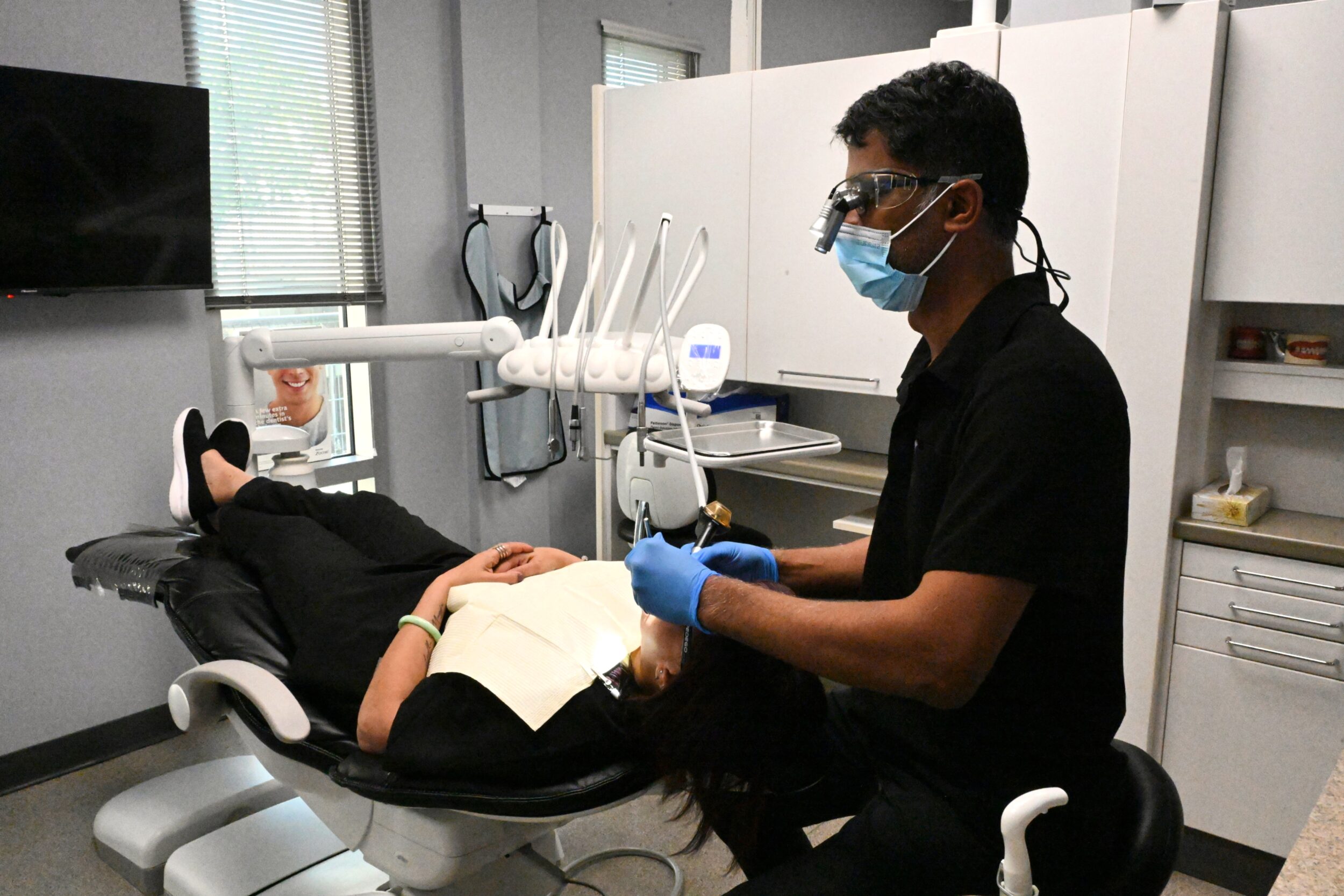Crown Lengthening in Calgary, AB
In general, crown lengthening is performed in order to improve the health of the gum tissue or to prepare the mouth for restorative or cosmetic procedures. Additionally, crown lengthening can also be used to correct a “gummy” smile, in which the teeth are covered with excess gum tissue. Through reshaping or recontouring the bone and gum tissue, crown lengthening exposes more of the natural tooth. If you want to create a pleasant, aesthetically pleasing smile, this treatment can be performed on a single tooth, many teeth or the entire gum line.

Reasons for crown lengthening
It is a versatile and common procedure that has a number of effective uses and benefits. The vast majority of patients who have undergone this type of surgery are extremely satisfied with the results. The following are some of the most common reasons for crown lengthening:
Restoring damaged teeth
In addition to periodontal disease, trauma and decay can also cause severe damage to the teeth. When a tooth has been broken below the gum line, crown lengthening can be used to prepare the area for a new restoration to restore the tooth.
Cosmetic uses
An excess of gum tissue can make teeth appear unnaturally short, as well as increase their susceptibility to periodontal disease. By removing excess gum tissue, one can restore a balanced, healthy appearance to the smile and thus improve its aesthetic appearance.
Dental crowns
As a result of crown lengthening, there is more space between the supporting jawbone and the dental crown. In this way, the new crown is prevented from damaging the gum tissue and the bone once it is firmly fixed in place.
What does crown lengthening involve?
In most cases, crown lengthening is performed under local anesthesia. In addition to soft tissue removal, the amount of time required for this procedure depends largely on how many teeth are involved. Prior to the procedure, any existing dental crowns will be removed and replaced as soon as possible.
To separate the gums from the teeth, the dentist will make a series of small incisions around the soft tissue. Even if only one tooth requires reshaping, neighboring teeth are often treated to achieve a more even result. The dentist is able to access the roots of the teeth and the underlying bone by separating the gums.
Sometimes, a small amount of tissue may be removed in order to provide sufficient exposure for the placement of a crown. A small amount of bone may also have to be removed from around the teeth in some cases by the dentist, depending on the condition. A combination of special hand instruments and rotary instruments are usually used to remove the bone during this procedure. Rotary instruments are similar in appearance to the drills used to treat cavities.
Once the dentist is satisfied that the teeth have been exposed sufficiently, the wound is cleaned with sterile water and the gum tissue is sutured using small stitches. In the immediate aftermath of surgery, the teeth will appear noticeably longer due to the fact that the gums have been repositioned.
To prevent the spread of infection at the surgical site, the dentist will use an intraoral (periodontal) bandage to cover the surgical site. A prescription for pain medication may be provided, as well as a chlorhexidine (antimicrobial) mouth rinse to reduce the growth of bacteria in the mouth. It will take approximately two to three months for the surgical site to completely heal.
In case you have any questions about crown lengthening, please do not hesitate to ask your dentist.